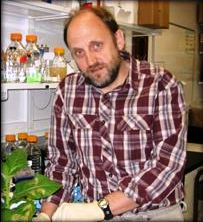
-
Herman B. Scholthof
- he, him, his
- Professor Emeritus
- Focus Area: Molecular plant virology
- Office:
- Plant Pathology Bldg, 331
- Email:
- [email protected]
- Phone:
- 979-862-1495
- Website: https://plantpathology.tamu.edu
Education
- Undergraduate Education
- B.S. Higher Agricultural School, Leeuwarden
- Graduate Education
- M.S., Wageningen University, The Netherlands
- Ph.D., Plant Pathology, University of Kentucky
- Post-doc: University of California - Berkeley
- Courses Taught
- PLPA 616: Methods in Molecular Biology of Plant-Microbe Interactions
- PLPA 620: Plant Virology
- PLPA 665: Viral Vectors and Gene Therapy
- PLPA 681: Seminar
- BESC 484; Field Experience (team-taught)
Molecular plant virology
Professional Summary
Herman Scholthof is a retired Professor in the Department of Plant Pathology and Microbiology, TAMU, who specialized in plant virology.